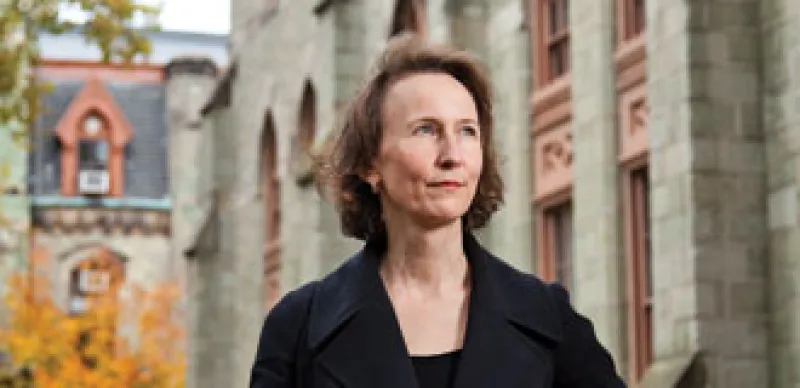Beyond the hallowed halls of Harvard University’s Cambridge, Massachusetts, campus, across the Charles River in Allston and just behind Harvard Business School, lies a largely abandoned 8.5-acre construction site. What was once to be a $1.2 billion, 537,000-square-foot science complex — the first step in a grandiose 50-year plan to expand the famed university’s already sizable footprint — is now an eyesore, a gaping hole that residents claim has sent rats scurrying into their neighborhood. That’s because, after years of double-digit investment returns, Harvard lost a stunning $10 billion during the 12 months ended June 30, 2009, from its once–$36 billion endowment fund.
Harvard is far from alone. In the past year, amid the worst economic downturn in decades, the ten largest U.S. endowment funds lost a combined $36 billion. Yale University’s $16.3 billion endowment, second in size only to Harvard’s, lost $5.6 billion on its investments. The endowments of Stanford and Princeton universities, which now each have about $12 billion in assets, saw their holdings drop in value by $3.5 billion and $3.7 billion, respectively.
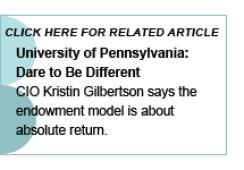
“You might say that certain schools fell too much in love with alternatives,” says Thruston Morton III, a former CEO of Duke Management Co., which manages the endowment of $4.6 billion Duke University, and now head of Global Endowment Management, a Charlotte, North Carolina, investment advisory firm.
The fallout has been fast and furious. Hundreds of universities across the U.S. have put building projects on hold, closed classes, fired staff, frozen salaries and scaled back benefits. Harvard, for example, eliminated 275 jobs this year in addition to halting construction in Allston. Yale reduced staff salaries and other nonpersonnel costs by 12.5 percent and froze several hundred job vacancies. Princeton, which chose to skip a transfer of funds from its endowment to its operating budget last spring, convinced 145 staff members to take early retirement as part of a two-year, $170 million (13 percent) budget cut and is now facing further staff reductions. Stanford has laid off 412 staff members, and 60 more people will lose their jobs by the end of the year.
Some schools did the previously unthinkable and issued debt to make up for the losses in their portfolios and to help cover some of their expenses. Harvard was first, floating $1.5 billion in taxable bonds last December, joined early this year by Princeton and Stanford, which each issued $1 billion in bonds. By the time most students had gone home for summer break, Brown University, the University of Chicago, Cornell University, Duke University, Johns Hopkins University and Vanderbilt University had followed suit, issuing anywhere from $100 million to $500 million in bonds.
Given the huge losses for colleges and universities across the U.S. — and the subsequent cuts and scrambling to raise cash — it’s understandable that some have begun to question the highly diversified endowment investment model pioneered by longtime Yale University CIO David Swensen. Certainly, endowments’ record of double-digit gains over two decades came to a crashing halt as markets cratered and liquidity dried up. Despite the devastation, however, there is almost universal agreement among endowment heads and other industry experts that the model is very much alive. But most agree that the financial crisis has led schools to rethink how they implement the model, as well as to reassess the role that endowment funds play in their institutions’ operating budgets and capital projects.
“The endowment model isn’t dead,” affirms Josh Lerner, a Harvard Business School professor who has written a 25-page case study on Swensen and the Yale University Investments Office. “But schools aren’t letting a good crisis go to waste. This is a chance to look at their cost structures and their portfolios and assess whether they should be doing something differently.”
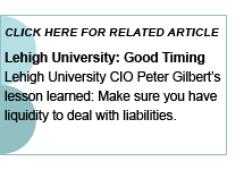
Risk management is coming back into vogue too. At Wake Forest University in Winston-Salem, North Carolina, new CIO James Dunn is implementing hedging techniques such as using collars to lock in gains and protect the downside. He is also evaluating his school’s spending model, putting away money in the good years to use as a buffer during leaner times and establishing an asset-liability framework, a well-honed strategy long used by pension funds. Most endowment heads say that the key to managing risk is more fully understanding it, using metrics and stress tests that look at the whole range of potential outcomes and applying them across all assets and liabilities.
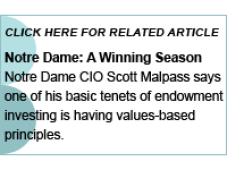
Many colleges and universities are victims of their own investment success. According to Boston-based consulting firm Cambridge Associates, 62 of its large endowment clients earned, on average, an annualized return of 11 percent from December 31, 1989, to June 30, 2008, easily beating a traditional portfolio of 70 percent stocks and 30 percent bonds, which was up 9.3 percent a year during the same period. As coffers swelled, schools started spending lavishly to attract students and ever-increasing dollars from donors, as well as government research grants. They dangled fat paychecks to attract rock star faculty and built professional-quality sports stadiums, rock climbing walls, Olympic-size pools and plush dormitories.
Washington lawmakers also had a hand in feeding the spending frenzy. In early 2008, Senators Chuck Grassley of Iowa and Max Baucus of Montana sent questionnaires to 136 institutions with $500 million-plus endowments. They were concerned about the fact that these schools had amassed mountains of cash without paying taxes, a situation that as the ranking members of the Senate Finance Committee they are in a position to change. Worried about potentially losing their tax-free status, many colleges went on a preemptive spending spree, increasing their financial aid programs in hopes of appeasing Washington.
One critical challenge for many schools will be to break their dependence on using endowment earnings to pay for operations. “The real question is whether schools were too extravagant in the first place,” asserts Edgar Barksdale, CEO of Federal Street Partners, a Stamford, Connecticut–based alternative investment firm, and a board member of Duke Management. “Most corporations have reassessed the growth and expansion plans they put together before the crisis. Educational institutions must do the same thing.”
Allan Bufferd, who managed the now–$8 billion endowment at the Massachusetts Institute of Technology in Boston for more than 30 years before retiring in 2006, says that school officials face hard choices: “You can increase revenue from other sources, or you can decrease expenditures.”
Back in the dark ages of endowment management — circa 1985 — portfolios were a tiny fraction of the size they are today and were overseen mostly by outside advisers or banks. That year, Yale hired Swensen, convincing the then-31-year-old former Ph.D. student of Nobel Prize–winning Yale economist James Tobin to forgo a potentially lucrative career on Wall Street to take over the university’s $1 billion portfolio of stocks and bonds. The new Yale CIO quickly identified previously arcane investments like hedge funds and private equity as separate asset classes that he believed belonged in institutional portfolios in increasingly greater quantities. Swensen was convinced that these asset classes would provide both diversification and the chance for outsize returns by exploiting opaque parts of the market. By the mid-1990s one fifth of Yale’s endowment portfolio was comprised of hedge funds, which Swensen calls absolute return strategies.
Swensen paved the way, first for Harvard, Princeton and Stanford, then for the endowments of other large schools. Jack Meyer, hired to manage the Harvard endowment in 1990, succeeded in delivering Swensen-like double-digit returns during his 16-year tenure as CEO of Harvard Management Co., before leaving in 2005 to start a hedge fund. Swensen and Meyer took opposing views on the actual management of the assets, however. Yale sought out the best outside managers, whereas Harvard at one time ran as much as 85 percent of its assets in-house, causing some to dub its management company a hedge fund itself.
The success of Harvard and Yale attracted imitators. After suffering endowment losses in 2001 and 2002, smaller schools looked to their Ivy League idols for guidance on bulletproofing their portfolios. “Alumni called me up and said, ‘We’re going to be just like Yale, right?’” recalls the CIO of one midsize endowment fund. As a result, many small schools crowded into hedge funds and private equity, but they underestimated the risks. Limited access to the finite universe of top-tier investment managers began to create additional problems for a large swath of schools. The best hedge funds closed, and smaller endowments invested in second-tier players. At the same time, the top private equity funds became bloated and their managers invested in less lucrative deals.
“If you can’t get into the top decile or quartile managers, it isn’t worth investing in alternatives,” contends Lawrence Kochard, CIO of Georgetown University’s nearly $1 billion endowment.
The management of so many billions meant hiring top investment talent and ponying up the money to retain it. For years, Meyer had to battle factions of the Harvard community that demanded a reduction of the multimillion-dollar salaries paid to him and his team. Despite the fact that the endowment office had split off as a separate investment management company, some vocal Harvard alumni did not take kindly to seeing Wall Street salaries dispensed in Cambridge. As the endowment approached $23 billion in assets in early 2005, Meyer announced he was stepping down, taking several of his star portfolio managers with him.
At about the same time, other investment officers across the country were becoming frustrated with the constraints imposed on them by school regimes. Managing complex portfolios demanded thinking — and compensation — outside the box of academia, and not all schools were able to keep their restless CIOs happy. In their attempt to follow the highly diversified investment model, CIOs like Mark Yusko at the University of North Carolina and Bob Boldt at the University of Texas crossed swords with their boards of trustees or regents. Between 2004 and 2006 several endowment chiefs jumped ship to start up their own funds. Among them: Boldt; Morton; Yusko; a team from Stanford University headed by Michael McCaffery; and Alice Handy from the University of Virginia.
Harvard and Yale also kicked off a spending race that grew to include an ever-increasing number of schools. Harvard, for example, added 6 million square feet of new space between 2000 and 2008, though the number of students stayed the same. In 1996, Yale created its own commercial real estate development group, University Properties, and bought up dozens of retail stores to transform the New Haven downtown.
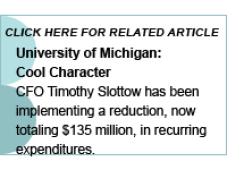
Then disaster struck. At Yale, Swensen suffered only his second-ever losing year, as the school’s endowment dropped 24.6 percent for the 12 months ended June 30, 2009, driven by its hefty allocation to private equity and real assets (especially oil and gas). Harvard’s endowment, which has been managed by CIO Mendillo since July 2008, did even worse, falling 27.3 percent in the past year as its private equity investments lost nearly a third of their value.
“With perfect hindsight we and most other investors would have started this year in a more liquid position and with less exposure to some of the alternative-asset categories that were hardest hit,” Mendillo allowed in Harvard’s fiscal 2009 year-end report.
Both Harvard and Yale have tried to put on a brave face, standing by the long-term success of their strategies. Despite the recent losses, Yale has an 11.8 percent annualized return over the past ten years; Harvard has an 8.9 percent annualized return.
“The three core principles of the endowment model — diversification, trading liquidity for higher long-term returns and active management — didn’t work as expected during the chaotic deleveraging in the second half of 2008, though it still worked better than most other investing strategies,” explains former Stanford University Investment Management Co. CEO McCaffery, who now runs Makena Capital, a $10 billion investment firm in Menlo Park, California.
Endowment officers learned some very painful lessons about investing during the financial crisis — most of which involved risk. “Schools enjoyed double-digit returns for years because their portfolios were inherently risky,” says Andrew Rosenfield, CEO of Guggenheim Investment Advisors in Chicago. “That is, they took on real equity and drawdown risk to generate returns.” The only way to adequately think through the risk of a portfolio, he adds, is to assess all outcomes that could occur, from substantial losses to very high returns. “Risk is not a single number,” avers Rosenfield.
At Wilton, Connecticut–based Commonfund, which manages $25.5 billion for nearly 1,600 nonprofit organizations, it is William Martin’s job to help schools — and asset managers — manage their risk. Martin, who joined the Commonfund from Bank of America in April 2008 as chief risk officer, says the problem lies in the metrics and stress tests that endowments were using going into the crisis. They were built based on analytical methods that assumed normal market conditions, he explains, and their worst-case scenarios could not have captured the perfect storm of significantly increased volatility, highly correlated asset classes and complete illiquidity. Moreover, the stress tests were not applied by schools comprehensively across all their assets and liabilities and were therefore not equipped to assess the impact that the lower value and illiquidity of their investment portfolios would have on their spending plans.
Many schools are already taking steps to more fully understand risk. Sally Staley, CIO of Case Western Reserve University’s $1.4 billion endowment in Cleveland, notes that the job description of its director of risk management, Anjum Hussain, has expanded substantially since he was hired in 2006. Hussain helped the university negotiate the market turmoil by leading the charge to reduce risk in its portfolio, cutting its exposure to equities to below the 30 percent minimum in its asset allocation plan in October 2008. By November the school had started to reintroduce risk to its portfolio by trading options on the VIX volatility index, which were at record highs.
“Risk is not just about playing defense,” Hussain explains. “You have to play offense as well. You can’t make any money if you don’t take risk.”
Managing risk also requires understanding extreme events — the fat tails made famous by Nassim Taleb’s The Black Swan, a recent book on highly unlikely, but still probable, events like the credit crisis. Endowments are coming to the conclusion that they may not need 15 percent returns every year and can instead trade some of the upside for downside protection using futures and options.
The most painful lessons involved liquidity risk. Many endowments were squeezed during the past year because they hadn’t set aside enough cash and had too high an allocation to asset classes — hedge funds and private equity — that couldn’t be readily sold. “Liquidity is something we and others had not paid as close attention to as we should have,” admits Christopher Brown, CIO of Bucknell University, whose $443 million endowment lost 16.9 percent for the 12 months ended June 30, 2009.
“I don’t think in our lifetime we will take liquidity for granted ever, ever again,” adds Sandy Urie, CEO and president of Cambridge Associates.
Many endowments are likely to scale back their allocations to real estate, timber, leveraged buyouts and venture capital. These illiquid investments accounted for 25.8 percent of all university assets as of June 2008, according to the latest data available from the National Association of College and University Business Officers in Washington.
“Endowments are still interested in opportunistic, illiquid strategies, but they’re doing it in smaller bite sizes,” says John Hunt, CEO of J.P. Morgan Asset Management’s institutional business. Colleges and universities are also likely to promote greater cooperation and sharing of information between their endowment and administrative officers. Some of the largest schools — Duke, Harvard, Stanford and Yale — had built separate investment management companies away from their counterparts in the finance offices; at other schools, such as Williams College, the endowment offices had moved off campus to distant locales.
Some schools are correcting that separation. Dunn, who was hired from Wilshire Associates earlier this year to manage Wake Forest’s endowment, simultaneously signed on to a position in the university’s administration, where he helps determine schoolwide spending levels and capital project allocations. At smaller schools the finance officer and the investment officer are often one and the same. At large, sprawling campuses like the University of Michigan in Ann Arbor, the endowment chief, the comptroller, the treasurer and the finance officer hold regular meetings. “The formalized process we have is unique and helps us think about the financial situation in a broader context,” explains Michigan CIO Erik Lundberg.
No matter how hard educational institutions work to build back their decimated portfolios, the hole in the current economy is the biggest risk they face today. Endowment chiefs are cautious in their outlook for the U.S. economy — and thus for the markets. Many are starting to take some profits off the table, given the rally in equities so far this year. Others see the danger in trying to reduce the risk in a portfolio while at the same time staying opportunistic and maintaining a long-term mind-set. Few have an appetite to raise tuition, which has gone up faster than inflation in the past two decades and is already out of reach for many American families. Until the economy improves and creates jobs, schools may have to ratchet back spending even more.
In Cambridge the fate of the Allston science complex is still an open question. Workers are currently preparing the site for a harsh New England winter, filling in the giant 5.5-acre crater and waterproofing the exterior foundation walls. Then, early in the new year, as the cold winds blow off the Charles River, Harvard officials will be sharpening their pencils and hunkering down to determine if their big dream will ever be realized.



